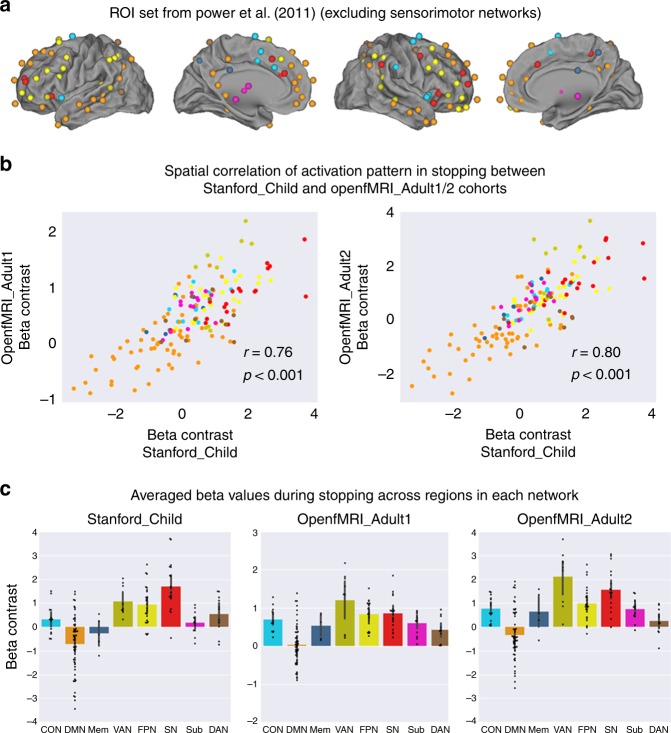Fig. 4.
Similarity of network activation in children and adults. a ROIs were defined using functional networks implicated in cognition, perception, and control from an independent study by Power et al.40. Each ROI was color-coded based on the functional network to which it belongs. ROIs from sensorimotor networks were excluded in the analysis. b Brain activation patterns elicited by stopping (SuccStop versus Go) in children were significantly correlated with activation patterns in the two different adult cohorts. SN, Sub, FPN and VAN nodes showed the greatest activation during stopping in children and adults. DMN nodes showed the greatest deactivation during stopping in children and adults. c Activation levels (Beta-weights) in large-scale brain networks during stopping in children and adults. Error bars represent standard deviation. Activations were averaged across regions in each functional networks. Networks are color-coded and the same coding was used across all the panels: CON: cyan; DMN: orange; Mem: navy blue; VAN: green yellow; FPN: yellow; SN: red; Sub: magenta; DAN: brown. CON: cinguo-opercular network, DMN: default mode network, Mem: memory network, VAN: ventral attention network, FPN: fronto-parietal network, SN: salience network, Sub: subcortical network, DAN, dorsal attention network. Error bar stands for standard deviation. Source data are provided as a Source Data file

